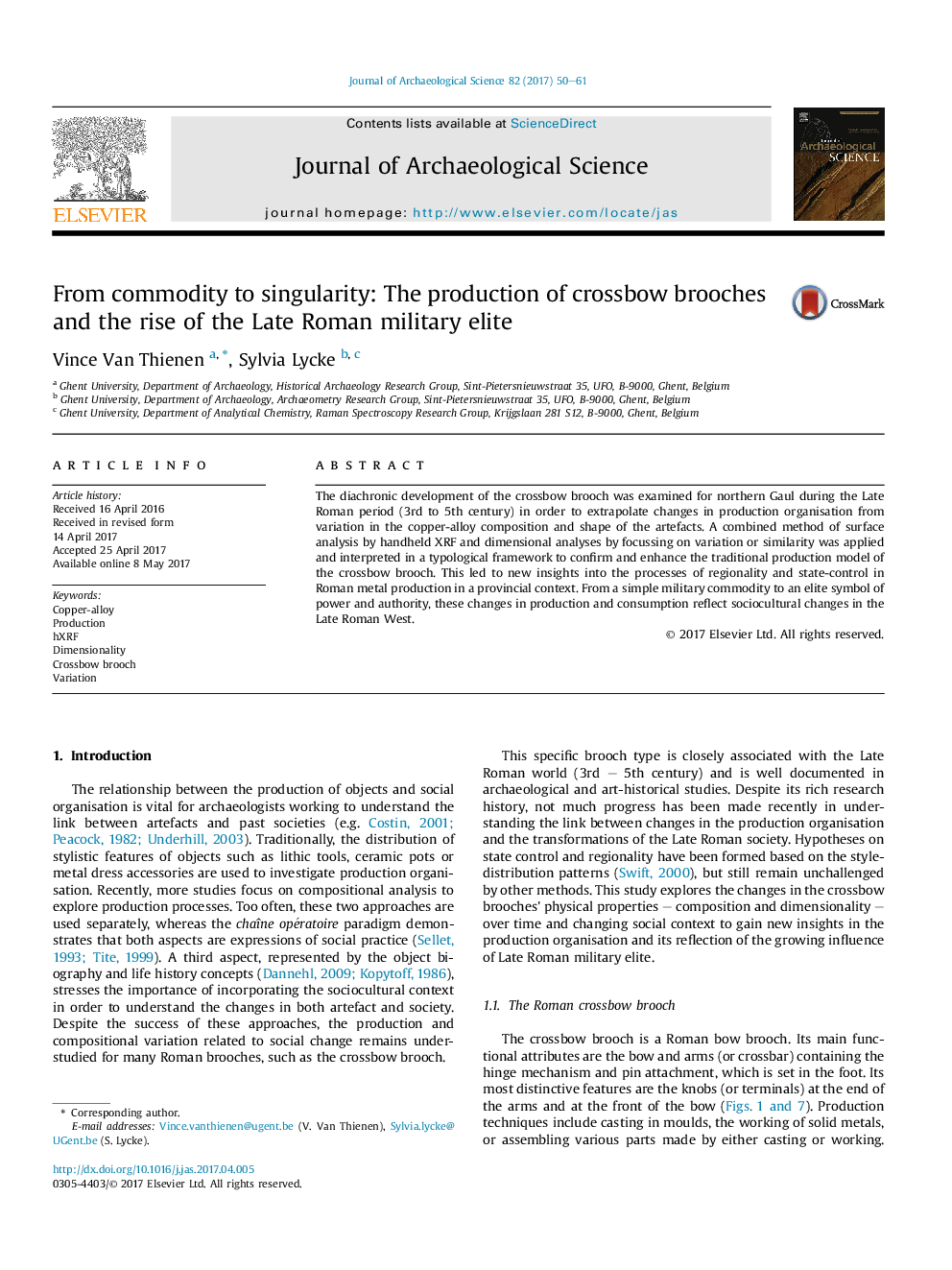| Article ID | Journal | Published Year | Pages | File Type |
|---|---|---|---|---|
| 5112021 | Journal of Archaeological Science | 2017 | 12 Pages |
Abstract
The diachronic development of the crossbow brooch was examined for northern Gaul during the Late Roman period (3rd to 5th century) in order to extrapolate changes in production organisation from variation in the copper-alloy composition and shape of the artefacts. A combined method of surface analysis by handheld XRF and dimensional analyses by focussing on variation or similarity was applied and interpreted in a typological framework to confirm and enhance the traditional production model of the crossbow brooch. This led to new insights into the processes of regionality and state-control in Roman metal production in a provincial context. From a simple military commodity to an elite symbol of power and authority, these changes in production and consumption reflect sociocultural changes in the Late Roman West.
Keywords
Related Topics
Physical Sciences and Engineering
Materials Science
Materials Science (General)
Authors
Vince Van Thienen, Sylvia Lycke,
